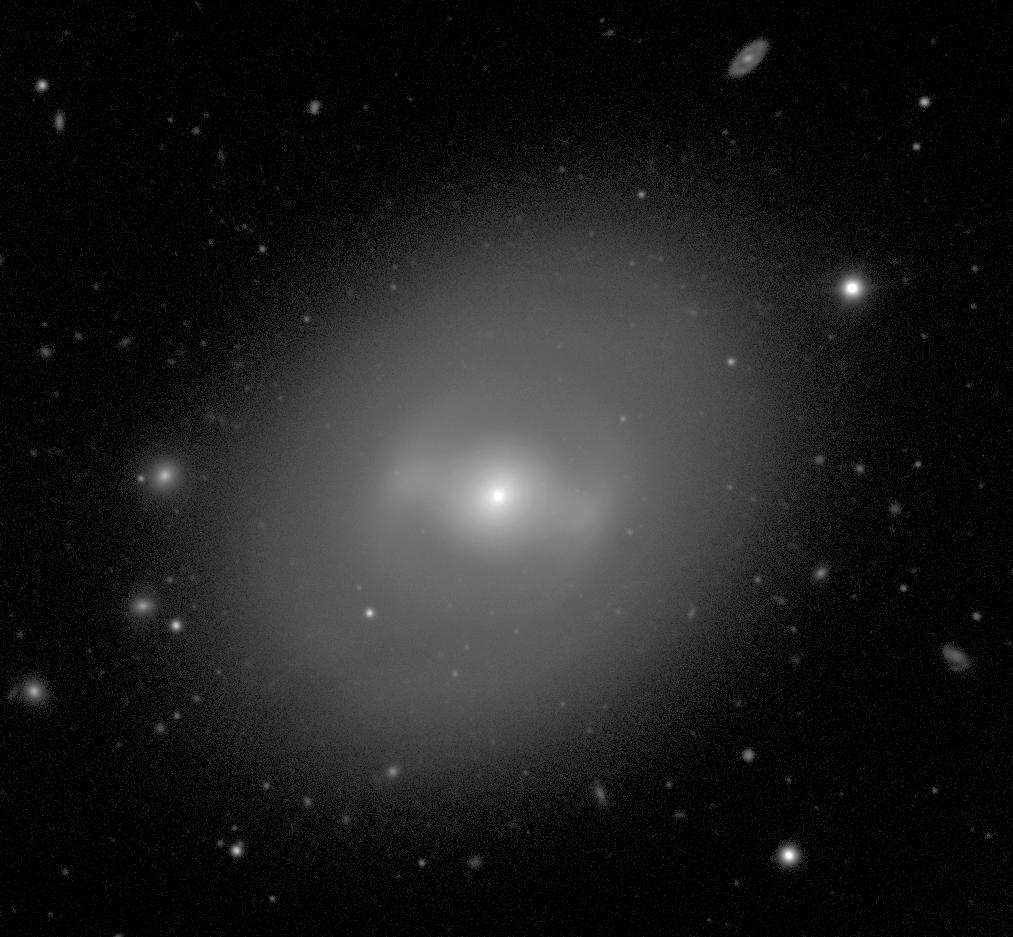

De Vaucouleurs Atlas Type: SB(rs)0+
Filter: B
Telescope: NOT 2.5-m
North up , East left
Field Dimensions: 6.4 x 5.9 arcminutes
RC3 Type: SB(rs)0+
RSA Type: SB02/3/SBa
Surface Brightness Range Displayed: 17.0-26.0 mag per square arcsec
Absolute Blue Magnitude: -20.8
De Vaucouleurs Atlas Description:
The dominant features of this galaxy are its strong bar and its bright disk. The bar has ansae and includes a bright bulge. The disk includes very subtle features that would be completely lost in poor seeing. The clearest disk feature is a diffuse inner ring surrounding the bar. This ring appears to be a nearly closed pseudoring of the brackett type, and we describe it with the (rs) classification. Note that the ring is not associated with an inner lens , as it is in NGC 2859 and NGC 3945 ; instead, the bar and inner ring are imbedded in a bright background disk. We can also recognize very weak spiral features and some dust in this outer disk, and all these structures form the basis for the S0+ classification.
NGC 936 is well-studied because of the high surface brightness of its bar and disk. Kormendy (1984b) measured rotation velocities and velocity dispersions over a wide range of radius, and found a higher than usual value of the Toomre (1964) stability criterion. Kormendy concluded that the disk of NGC 936 is stable against local disturbances, which may explain why the disk light is so smooth.
Merrifield and Kuijken (1995) used the Tremaine and Weinberg (1984) method to measure the bar pattern speed in NGC 936 , and derived a value that placed corotation just beyond the ends of the bar, in agreement with theoretical expectations.